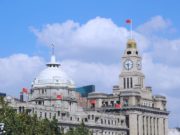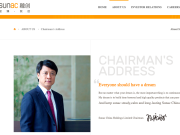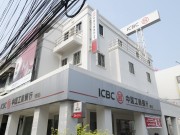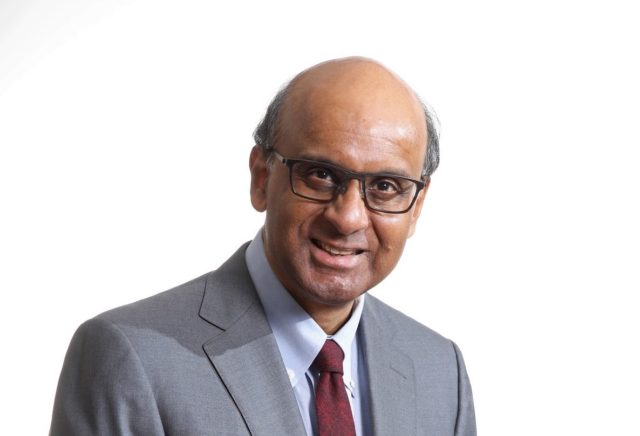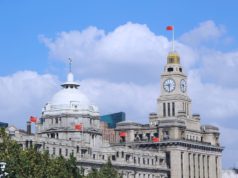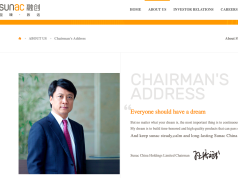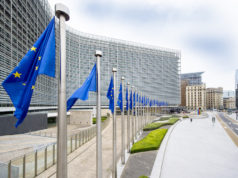Tharman Shanmugaratnam Chairman of MAS: Responding to a Perfect Long Storm
11th March 2022 | Singapore
Senior Minister and Chairman of Singapore Central Bank Monetary Authority of Singapore (MAS) Tharman Shanmugaratnam gave a speech at the IMAS-Bloomberg Investment Conference on 9th March 2022 titled “Responding to a Perfect Long Storm”. He highlighted 5 key points: 1. Prolonged geopolitical insecurity 2. Stagflation Risks (high inflation, slow growth) 3. Climate crisis (World’s population is already vulnerable to extreme weather changes) 4. The age of recurring pandemics 5. Global fragility (Eg. Global food crisis will hit poorer countries hard). Tharman Shanmugaratnam: “These are each major risks and sources of fragility. Together they define a perfect long storm. I say long storm, because this is not just a perfect storm in the traditional sense where you have a confluence of one-off, conjunctural factors. These are structural shifts. They’re not cyclical or random shocks. They’re structural shifts, interacting with each other, that are going to be with us for some time. It makes for a new era of fragility, at the same time that we see opportunity.” (IMAS ~ The Investment Management Association of Singapore)
“ We are in the age of recurring pandemics “
Full Speech by Tharman Shanmugaratnam, Senior Minister and Chairman, Monetary Authority of Singapore

“Responding to a Perfect Long Storm” – Transcript of Speech by Mr Tharman Shanmugaratnam, Senior Minister and Chairman, Monetary Authority of Singapore, at the IMAS-Bloomberg Investment Conference on 9 March 2022
Ms Susan Soh, Chair of IMAS,
Mr Steven Yankelson, Head of ASEAN for Bloomberg,
Ladies and Gentlemen
I am very happy to join you this morning. It is an important conference, both because it’s IMAS’ 25th anniversary, and importantly because of the theme that you’re focusing on – investing for a green future.
Let me put this in the context of the era of profound uncertainty and fragility that the world has entered.
Investing for the future has become a much more complex game. It’s more complex than it was pre-pandemic. It’s also more complex than it was two weeks ago.
It’s still an era with immense opportunity for investment in innovation and structural transformation for a better and more sustainable world. But we do face a combination of risks and fragilities that is without precedent in the last three quarters of a century.
I would describe it as a ‘perfect long storm’, shaped by the confluence of several forces.
First, the war in Ukraine represents a rupture in the system of rules that governed global stability, and in particular the sovereignty and territorial integrity of nation states. It was never perfect, never totally comfortable to all players, but things were held in place. Now we have a rupture, and it will be a rupture with many ramifications. We now face a period of heightened and likely prolonged geopolitical insecurity.
Second, the risk of stagflation is real, in many parts of both the advanced and developing world. Higher-for-longer inflation is now very likely, and so is slower growth.
Third, the climate crisis looms. It’s getting more urgent, as the most recent UN report highlights. A large part of the world’s population is already vulnerable to extreme weather changes. But we’re all going to get more vulnerable. That is a certainty.
Fourth, pandemic insecurity. Omicron will not be the last variant in the current pandemic. And COVID-19 is not the last pandemic we’re going to see. We are in an age of recurring pandemics. To prepare for them, we have to mainstream preparedness the way we are beginning to mainstream preparedness for climate change. The world is still far from doing so.
Fifth, we face continuing but now enhanced fragility coming out of divergences in growth and wellbeing, both within societies and across the world. The war in Ukraine will accentuate the risks faced by the developing world in particular – both because of the higher inflation and slower growth in general, but in particular the prospect of higher food, fertiliser and other commodity prices. A global food crisis will hit poorer countries hard.
These are each major risks and sources of fragility. Together they define a perfect long storm. I say long storm, because this is not just a perfect storm in the traditional sense where you have a confluence of one-off, conjunctural factors. These are structural shifts. They’re not cyclical or random shocks. They’re structural shifts, interacting with each other, that are going to be with us for some time.
It makes for a new era of fragility, at the same time that we see opportunity – the tremendous scope for innovation that’s on the horizon, and the opportunity to unleash investments in the global commons through new public-private sector collaborations.
But we can’t wish away the structural fragilities. We can’t operate on the basis of forecasts or scenarios that reflect our hopes, as distinct from what is possible. Ukraine is a reminder of that. The risks were ignored or downplayed, despite ample evidence. The Covid pandemic too is a reminder of that. The risks were all over the screen, and they were ignored.
So we have to prepare for the future, not on the basis of what we hope to see, but what is possible. That’s how we must prepare for the future.
I’ll describe very briefly these five fragilities before going on to talk about the opportunity and imperative of public-private collaboration and the role of financial markets.
First, the consequences of the Ukraine war. I’ll be very brief because we’ve all learned a tremendous amount these weeks. We’re still learning, from history to what the possible future trajectories will be.
If we listen to the most seasoned experts or thoughtful observers, there is no realistic prospect of a trajectory with a good outcome coming out of the war, or that leaves any major country better off than before. It is only be a question of how bad the outcomes will be. The situation will likely get worse before it can get better, but none of the trajectories is going to lead the world to a better place.
Ukraine of course, is hit the hardest. The human costs are growing by the day, and so is the destruction of its economy and infrastructure. Depending on the outcome of the war, Ukraine can expect massive external support for reconstruction through the international institutions.
Russia is, under any scenario, going to be diminished. Its economy will likely go through a severe slump. It will have diminished stature, economically as well as politically, and it will be more isolated. Not just because of the sanctions, which have been unprecedented in scale, swiftness and in the way the US and Europe came together – they have not always agreed on sanctions in the past – and many others around the world including Singapore have joined in the international sanctions. But it’s not just the sanctions. It is the way in which many leading businesses are responding. There has been an exodus of investors from Russia, and I think it will be a long time before Western investors re-enter the market or re-enter into trading relationships. There are also indications of a desire on the part of many in the younger Russian population to emigrate. The combination of weaker investments, weaker access to technologies and a brain drain is a powerful negative for any economy, and coming to an economy that was already weak for some time, the outlook is not good.
But beyond Ukraine itself, it is the ramifications for the world that we should be most concerned about. The macroeconomic risk, which is the second fragility which I was talking about, is now heightened. Higher-for-longer inflation is now a near uncertainty. It complicates what was already an extremely difficult task for central banks, particularly in the advanced world – the task of balancing growth and inflation considerations. The US, where inflationary pressures are much stronger than the rest of the advanced world, has had no choice but to lean in favour of countering inflation. That’s unlikely to change fundamentally but the task is now more complicated. The timing and pace of normalisation of interest rates is now a more complicated matter.
But it’s broader than just central bank action on interest rates. We have to address a broader set of shocks, that go beyond even what we saw in 1973 with the oil price shock. This time it’s not just oil prices, it’s food, it’s a range of industrial metals, it’s fertilizers and other commodities. The war and sanctions are also further disrupting supply chains that were beginning to recover after the last two years.
So this is an unprecedented situation. The economic models are not going to be very useful in projecting outcomes by the way, because they don’t deal very well with supply side disruptions. They also have little precedent to go by, of events of this scale, sanctions of this scale, or energy and commodity price increases of this speed and scale.
We have to plan for a range of scenarios, but tilted very much towards the downside: higher and more persistent inflation and slower growth.
I don’t think 20 or 30 years from now, we will regard this inflation risk itself as the most serious problem of the current period, compared to the rupture in international order, and the setbacks we’re facing in addressing the global commons. But inflation is not a trivial problem. Again, we are in a different situation from 1973. Populations were young then. Now you have a large part of the advanced world’s populations that are older. Middle aged workers tend to have wages that tend to stay flat, and a large part of the retiree population is on fixed nominal incomes. 5-6% inflation can be a very demoralising experience for populations and will complicate the task of governments to rally support for the types of initiatives, the taxes, the carbon pricing that is required to address the larger challenges we face. So it’s not that inflation in itself at 5-6% is the biggest problem. It is the social and political implications, the implications for the political capital that is required for nations to address the larger challenges.
Which brings me to the third challenge – the climate crisis. It is no longer possible to make the adjustments needed to tackle the climate crisis without ensuring energy security. The Ukraine war has forced that thinking.
The unpalatable fact is that in the short term, Europe and the world are going to require increased reliance on fossil fuels to provide for energy security. In the short term, to prevent the lights from going out in Europe and to preserve social stability, new sources of oil, gas and coal are going to be necessary. Even before Ukraine, in 2021, domestic coal production rose to cope with growing energy demand in most parts of the world, including Europe, and avoid a sharp rise in energy prices.
That’s the unpalatable short-term reality. We can’t be purist about this, because if sharply higher energy prices or disruptions threaten social and political stability, the world is not going to be able to address its longer-term challenge, which is our foremost challenge, of tackling climate change.
But it does also mean that even as we experience these short-term trade-offs between energy security and sustainability – even as the world increases its use of oil, gas and coal in the short term – we redouble our efforts to make the longer term transition to cleaner energy and a sustainable future. The recent UN report was a needed warning. We do have to redouble our efforts in the medium- to long-term – to innovate and strengthen supply of renewables, invest in energy storage, and move towards cleaner fossil fuel energy generation in the transition.
Over the medium to long term, the two objectives move in the same direction – tackling the climate crisis and preserving energy security. But we need clarity of fiscal and regulatory frameworks to achieve that. We need clear carbon tax and carbon pricing frameworks, so that we do not risk a sudden loss of energy security or loss of political capital, while encouraging and strong incentivising investments in sustainable energies.
Singapore as you know is accelerating its long term climate change plans, and also stepping up its 2030 goals. The government’s recent Budget speech laid this out, and yesterday in Parliament, both Senior Minister Teo Chee Hean and Minister Grace Fu spoke about this more specifically.
Fourth challenge is in global health security. People may be getting tired of this, but it’s a real challenge that we have to prepare for. The pathogens are coming. It’s already baked into the system – in fact, the risks have been accentuated by global warming, the loss of biodiversity, deforestation, and increased human incursions into the natural world. The rate of zoonotic spillovers, spillovers of pathogens from the animal world into human life, has increased and they are out there. No one knows exactly when the pandemics will come, but they will come. They are happening more frequently, and can be as severe or more severe than COVID-19.
So it requires a massive collective effort, within societies as well as globally. And it requires a new sense of enlightened self-interest on the part of every country, including the better-off countries, to recognise that it’s in their interests – even if they’re not motivated by the ethics and morality of the matter, which should be strong enough motivation, even if that’s not the key motivation, enlightened self-interest dictates that we invest in global public goods, and we help the world at large to be better prepared for the next pandemic. Everything from R&D of new vaccines, drugs and diagnostics, to strengthening surveillance systems, to developing manufacturing capacity so that the next time around, we can roll out vaccines much faster and at scale around the world. So that’s the fourth challenge.
Fifth, the challenge of less inclusive growth, within and across nations. There is a real risk of rollback in the gains that the developing and emerging world have made in the last 2-3 decades. We have now a real risk of rollback coming out of each of those other structural shifts – geopolitical instabilities, higher food and energy prices and slower growth, and the fact that both climate change and pandemics will hit the poorest and the most vulnerable countries the hardest. Each of these forces now makes it harder for developing countries to converge with the advanced world. And it raises the prospect of renewed divergence, that will not just be a problem or challenge for the developing countries. It will be a challenge for the world because it will have many ramifications, including forced mass migration, and we will be losing a major opportunity for global growth because the big opportunity has been in the developing world. So we all have to be concerned about that.
Remember, the last time we had sharp food price increases, in 2008, it led to the Arab Spring and subsequent major instabilities. These aren’t fanciful scenarios. That’s what happens. Social stability is affected and civil wars can erupt when food is scarce or priced out of reach.
We must address this confluence of challenges globally, address this perfect long storm. We need new international rules of the game or much harder norms, and more effective systems of deterrence, to preserve geopolitical stability. But we also need a new era of investment – investment in energy security and climate and pandemic security, and investments in the developing world. It’s a massive opportunity, but it requires new public-private sector compacts, globally as well as nationally.
Government spending in the advanced world have benefited for several decades, and especially since the end of the Cold War, from what’s been called the peace dividend. They have been able to spend less on defence, and shift resources to other needs. Those other needs are not going away. If anything, social spending in many areas, particularly healthcare spending, is increasing. But defence spending is back. The war in Ukraine has certainly forced the issue in Europe. Defence spending in the advanced world is now back, and will be back for the long term, at the same time that all other pressing fiscal needs remain. Governments will have to find ways to finance this, so as to avoid cutting back on other spending and reducing people’s well-being.
But we cannot let the challenge of geopolitical security distract us from investing to tackle climate change and pandemic security. We’ve got to invest in the global commons, and it will become more expensive if we don’t invest early. The longer we defer strengthening the global commons, the more expensive it gets.
Today’s governments, corporate leaders and investors have to now mainstream investing in the global commons – investing in sustainability, inclusivity and health security. There is immense opportunity for innovation. For climate change – in storage and new renewable sources, in nature based solutions, and in more efficient fossil fuel energy generation in the transition to 2050. There’s a huge opportunity for new innovations and for scaling up the successful innovations.
There’s also a pressing need, for adaptation to climate change, not just mitigation to cut emissions. Building up coastal defences, improving water efficiency, developing viable methods of carbon sequestration and storage, even better pest control – all these are going to be very important mechanisms for governments, the private sector and communities to bolster adaptation.
This fundamentally requires vastly scaled up public and private sector collaboration. Governments are not going to be able to afford the scale of investment required. If you just take climate change alone, we know that it’s going to require roughly US$3.5 trillion per year over the next 30 years to invest in the infrastructure and innovations required for a more sustainable future. But it can’t be left to the private sector or the markets either, because there are externalities that are not factored into the commercial motivation, and the markets on their own will not invest as quickly as will be needed to achieve the world’s needed mid-century targets.
There is hence a strong case for the public sector to incentivise the private sector, because the overall social returns vastly exceed the private returns. The public sector can do so by putting skin in the game to mitigate risk for private investors. Second, by having a clear and predictable plan for carbon taxes and pricing. Thirdly, by regulating industry to tackle egregious emissions in time.
The increased momentum of financial market initiatives over the last year is an important achievement, and we now have to work hard on them. GFANZ, launched in April last year, and the Climate Finance Leadership Initiative that Michael Bloomberg is leading, and the various other initiatives to develop voluntary carbon markets, a more reliable system of ESG data and taxonomies, and strengthened disclosure standards especially with the recently established International Sustainability Standards Board. Singapore has, as many of you know, been very actively involved in these critical climate finance initiatives.
Carbon markets based on reliable, high-quality data will be an important part of the solution. It’s not just about helping the corporate players and industries that finding it hard to reduce emissions. It’s about channelling resources for nature-based solutions and other mitigation initiatives.
Don’t wait for governments to lead. Market leaders have to move ahead. But neither can governments think that the markets alone are going to solve this. It requires public sector participation and, especially, clarity of tax and regulatory frameworks.
Let me end by returning to the broader, geopolitical challenge of this era.
We must fortify multilateralism, and the rules of the game to ensure that global stability is preserved, and that might is not right. Global stability is like oxygen for the international economic system. You don’t realize you need it when you have it, you realize how badly you need it when you don’t have it. And geopolitical instability is now part of the perfect long storm we have entered. The global order is going through a major rupture and we do not yet have a solution.
What we have to avoid is today’s fragilities leading to polarisation – alternative payment and financial systems, alternative technological ecosystems, alternative trade and economic systems. We have to avoid that because no one will benefit. Neither the US nor China is going to benefit from it. None of us are going to benefit from it. It will raise costs across the board without conferring greater security.
We need arrangements for a durable system of multipolarity. We’ve moved past the world of unquestioned US dominance. It is a multipolar world. But multipolarity does not mean polarisation. It does not mean alternative systems competing with each other. That’s what we have to avoid.
It can only be achieved with a new US-China understanding. The war in Ukraine, and what it represents, should provoke fresh thinking within the US as to whether China is really its overriding security threat. It does require a new understanding.
It also requires fortifying international institutions – the IMF and World Bank, the WTO, the WHO and new global health mechanisms to prepare for pandemics. And it will require considerable geostrategic skill on the part of each of the major powers.
We are not in a hopeless situation. If anything, Russia’s invasion of Ukraine has energised supporters of an open, rules-based global order, one that preserves the sovereignty and territorial integrity of all nations. It has energised the beneficiaries of that system – not just countries, but corporates – energised them to recognise their role as beneficiaries, play their roles to uphold the principles of that open and stable international order, stand up for it, and recognise that the long term security it confers is worth paying for.
About the Investment Management Association of Singapore (IMAS)
The Investment Management Association of Singapore (IMAS) was founded on 22nd September 1997 by 10 major financial institutions in Singapore and has since grown to include more than 150 members. As a representative body of investment managers, IMAS spearheads the development of the industry in Singapore, by fostering high standards of professionalism amongst practitioners and creating public awareness of, and interest in the industry. We act as a forum for members, promote exemplary best practices, represent members collectively, educate investors, and improve standards of research and fund management expertise, as a collective drive to promote the investment management industry.
Sign Up / Register
Caproasia Users
- Manage $20 million to $3 billion of assets
- Invest $3 million to $300 million
- Advise institutions, billionaires, UHNWs & HNWs
Caproasia Platforms | 11,000 Investors & Advisors
- Caproasia.com
- Caproasia Access
- Caproasia Events
- The Financial Centre | Find Services
- Membership
- Family Office Circle
- Professional Investor Circle
- Investor Relations Network
Monthly Roundtable & Networking
Family Office Programs
The 2025 Investment Day
- March - Hong Kong
- March - Singapore
- July - Hong Kong
- July - Singapore
- Sept- Hong Kong
- Sept - Singapore
- Oct- Hong Kong
- Nov - Singapore
- Visit: The Investment Day | Register: Click here
Caproasia Summits
- The Institutional Investor Summit
- The Investment / Alternatives Summit
- The Private Wealth Summit
- The Family Office Summit
- The CEO & Entrepreneur Summit
- The Capital Markets Summit
- The ESG / Sustainable Investment Summit



